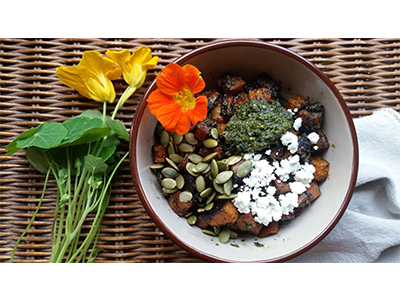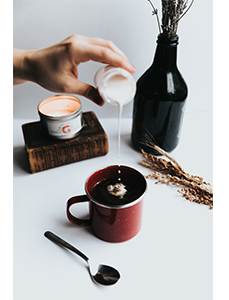5 Edible Flowers to Try

For as long as we've been hunters and gatherers, we have likely been consuming flowers. Nature would have it no other way. With their welcoming splendor for the senses, flowers invite us to touch, smell, and taste. The Persians and Greeks had their saffron, Victorians had their candied violets, and the French had their carnations.
Fast forward many hundreds of years, and the modern culinary landscape has continued to welcome the addition of flowers in its midst. With their rich colors and vibrant flavors, picking the right flower can be a fun way to impress almost any dish.
Nasturtium for a peppery pesto or caper substitute

Hailing from South America and originally cultivated in Peru, these cool-weather flowers are the chillest of them all. Requiring very little attention and water makes them the perfect choice for a busy gardener or a green-thumb aspirant. Both the flowers and leaves are edible and contain mustard oil, which packs a peppery flavor similar to arugula. Pick them in the cool morning when the flowers are open and add to salad or stir-fry. You can also use the green leaves to make a pungent and tasty pesto, pickle the seed pods and use as a substitute for capers, or grind the seeds and use like black pepper!
Lavender to add complexity to coffee or hot chocolate

Although this calming herb is more often used in soaps and lotions, to overlook its culinary draw is a novice mistake. Broken down into two basic categories (hardy English varieties & frost-sensitive French types), look for English varieties that are less sharp and pungent to the senses. Having a lot in common with rosemary (even though it's part of the mint family), lavender does well in meat and potato dishes. Surprisingly, it also lends complex notes to coffee and hot chocolate. Add a teaspoon of lavender buds per cup of coffee to the filter basket and brew normally!
Sorrel in soups and stews for a lemony bite

During the early spring or fall, you will find sorrel at its softest and most appetizing. Its deep roots require a deep pot so make sure to plan accordingly if you want to grow this bright and tangy herb at home. Add (in small portions) to soup and stews for a zing!
Bee Balm for a smoky texture or a natural decongestant

This potent and colorful flower has a smoky profile similar to oregano, making it the perfect addition to savory dishes. Petals of the bee balm flower can be dried and used to make a bright red tea that is good for digestion, bloating, and nausea. Since it contains lots of thymol (a natural decongestant), bee balm can also be used to make an herbal steam to clear nasal passages.
Calendula to spice up a saladThese cheerful flowers originally hail from the Mediterranean and absolutely love the sun! As reliant self-starters, you only need to grow them once, and you're good to go. Both the young petals and leaves are edible, offering a complex, pungent, and tangy flavor that pairs well with salads. For prolonged use, dry the petals and store in a jar. Harvest in the summer during the heat of day when dew has evaporated. If you want to grow them yourself, they are best grown in medium or large pots.
Image credit: A Good Carrot, Unsplash, & Pinterest
Sign up for FD's newsletter
The freshest stories from the food and dating world every week.




